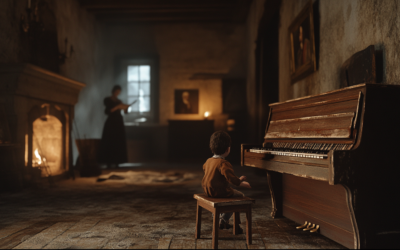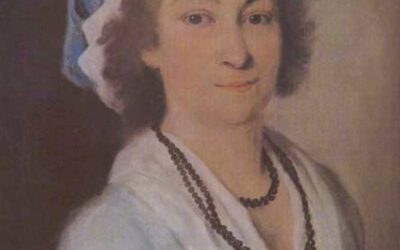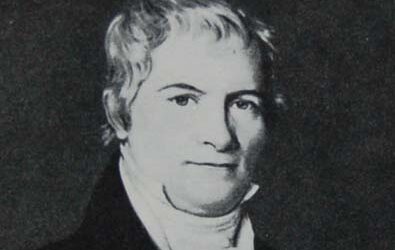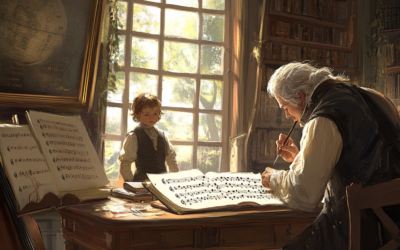The Mysterious Origins of Mozart's K.115
A Question of Authorship and Legacy
The mysterious history of Mozart’s Mass K.115 unveils a story of misattribution, myth, and scholarly conjecture.
Originally believed to be an early work by the young Mozart, K.115 was meticulously cataloged in the mid-19th century as a Missa Brevis. Yet as new evidence surfaced, suspicions grew that this work might actually belong to Mozart’s father, Leopold.
The journey of K.115 serves as a revealing example of how historical embellishments can shape our understanding of a composer’s legacy. From the early theories suggesting Wolfgang composed the Mass during his studies in Bologna to later revelations of striking similarities with Leopold’s compositions, K.115 invites us to reconsider the narratives surrounding Mozart’s so-called “genius.”
This Mass, rather than being a testament to Wolfgang’s early prowess, may instead reflect Leopold’s overlooked influence, exposing the ways in which the young composer’s image was shaped as much by myth as by music.
Mozart in Italy: The Untold Story
Was Mozart truly a solitary genius, or was he merely the instrument of his father’s ambition? “Mozart in Italy” challenges the conventional narrative, revealing a complex dynamic between father and son that shaped the course of music history. Prepare to question everything you thought you knew.
The Mass K.115 stands as a testament to how myth, rather than truth, often shapes the legacy of Mozart's so-called 'genius.'
Mozart: The Fall of the Gods
The tale of Mozart’s Mass K.115 is a complex narrative, marked by scholarly conjecture, editorial embellishment, and questions surrounding its authenticity. Initially cataloged in the mid-19th century, the piece was believed to be a youthful work by Wolfgang Amadeus Mozart, yet later research has cast significant doubt on this attribution. Here, we delve into the fascinating journey of this work and examine the shifting interpretations that surround its origins.
The Discovery and Initial Attribution
The story of K.115 begins in 1856 when music historian Otto Jahn noted a Missa Brevis for four solo voices and organ, complete up to the Sanctus, though only nine measures of the latter survived. Jahn speculated that the piece was composed around the 1770s. Just a few years later, in 1860, Ludwig Köchel, while compiling his now-famous catalog, encountered what he believed was an autograph of the Mass in the hands of publisher August André of Offenbach. Köchel tentatively dated it to the early 1770s, but later confidently assigned it to 1771, listing it as K.115.
This initial attribution was taken at face value for decades. Toward the end of the 19th century, the eminent publishers Breitkopf & Härtel incorporated K.115 into their collection of Mozart’s complete works, the Opera Omnia. They placed it as number 28 in Series 24, even releasing it as a standalone score. Over time, the work was arranged, completed, and even altered in later editions, effectively becoming a puzzle of adaptations and assumptions.
Theories and Hypotheses: Who Really Wrote K.115?
Various scholars proposed different contexts for K.115, each drawing on fragments of information and speculation. Théodore de Wyzewa and Georges de Saint-Foix suggested that Mozart could have composed it during his stay in Bologna in 1770, likely inspired by his lessons with the renowned Padre Martini. In contrast, Ludwig Schiedermair proposed a date in Vienna during the late summer of 1773, while Alfred Einstein believed it to be contemporaneous with the Missa Solemnis K.167, composed in June 1773 in Salzburg.
Einstein viewed K.115 as an “immediate result” of Mozart’s studies with Michael Haydn, Johann Ernst Eberlin, and Anton Cajetan Adlgasser. He assigned it a new position in his 1936 catalog revision (K.3) as K.166d, arguing that Mozart abandoned the composition due to Archbishop Colloredo’s demand for shorter liturgical pieces. Yet, despite these detailed attributions, Einstein’s theories were ultimately inconclusive, and K.6 catalog editors offered a more skeptical view, adding that the Mass could simply be a copy of a work by an unknown composer.
A New Theory Emerges: Leopold’s Shadow
In 1963, a surprising new twist came to light when the Sam Fox Publishing Company in New York released a piano reduction of a Mass in C major by Leopold Mozart. Listed by Max Seiffert in Leopold’s catalog, the piece bore striking similarities to K.115. Karl Pfannhauser, a meticulous researcher, uncovered a plethora of parallels between Leopold’s Mass and K.115, suggesting a different origin story for the work.
Among these striking similarities were 22 identical measures from the Allegro section of the Gratias to the Filius Patris in K.115, as well as the Qui tollis section and the double fugue in Cum Sancto Spiritu. These findings strongly indicate that K.115 is not an original work by Wolfgang but rather an extraction from Leopold’s earlier, grander Mass in C. Written prior to 1764, Leopold’s Mass predates any conceivable composition by an eight-year-old Wolfgang.
Debunking the Myth: The Bologna Connection Unraveled
Pfannhauser’s revelation that K.115 was, in all likelihood, Leopold’s work, challenges the narrative that has surrounded this Mass for over a century. If K.115 is indeed a derivation of Leopold’s earlier composition, it dismantles the notion that the piece reflects young Wolfgang’s musical training under Padre Martini in Bologna. Instead, K.115 serves as yet another reminder of the extent to which later editors and publishers may have projected onto Mozart a precocity unsupported by concrete evidence.
The Legacy of K.115: A Lesson in Musical Mythmaking
The story of K.115 highlights how easily myths take hold in the historical record, especially when they align with the desire to see Mozart as an unparalleled prodigy from an early age. The desire to celebrate Mozart’s genius has led, ironically, to the attribution of another’s work—his own father’s—to the young composer. Today, K.115 stands as a testament to the tangled legacy of attributions and assumptions that have shaped Mozart’s image. It prompts us to question: how much of what we celebrate as Mozart’s “genius” might instead be the result of historical embellishment?
In the end, K.115 is more than just a Mass with questionable authorship—it is a cautionary tale about the allure of myth in shaping music history.
You May Also Like
The Myth of Mozart’s Childhood
Mozart’s childhood is often romanticised, but behind the myth lies a more complex reality. This post explores the hidden dynamics within his family, questioning the traditional narrative of Mozart's early years and shedding light on the forgotten role of his sister,...
Bohemia or Moravia: Reconfiguring Music History
Why does music history insist on an Austrian narrative, when the contributions of other nations are just as crucial?
The True Caregiver: A Closer Look at Mozart’s Final Days
Who truly cared for Mozart in his final days: his wife Constanze or his sister-in-law Sophie? The True Caregiver unravels this age-old mystery, challenging our perceptions and shedding light on the figures closest to the composer in his last hours.
Unveiling the Truth: Mozart in Paris
Unveiling the often-overlooked reality of Mozart’s time in Paris reveals a story of manipulation and deception, far removed from the glorified narratives crafted by his father, Leopold.
The Questionable Legacy of Niemetschek’s Biography
Leopold Mozart’s life was a whirlwind of ambition, deceit, and disappointment—a stark portrait of a man chasing success at any cost.
Leopold Mozart: A Portrait in Shadows
Leopold Mozart’s life was a whirlwind of ambition, deceit, and disappointment—a stark portrait of a man chasing success at any cost.







